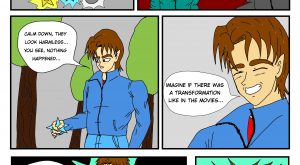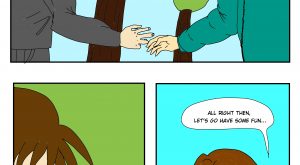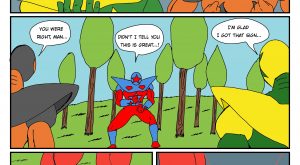Nausicaä of the Valley of the Wind (manga)
Nausicaä of the Valley of the Wind (Japanese: 風の谷のナウシカ, Hepburn: Kaze no Tani no Naushika) is a Japanese manga series written and illustrated by Hayao Miyazaki. It tells the story of Nausicaä, a princess of a small kingdom on a post-apocalyptic Earth with a toxic ecosystem, who becomes involved in a war between kingdoms while an environmental disaster threatens humankind.
Prior to creating Nausicaä, Miyazaki had worked as an animator for Toei Animation, Nippon Animation and Tokyo Movie Shinsha (TMS), the latter for whom he had directed his feature film debut, Lupin III: The Castle of Cagliostro (1979). After working on an aborted adaptation of Richard Corben‘s Rowlf for TMS and the publishing firm Tokuma Shoten, he agreed to create a manga series for Tokuma’s monthly magazine Animage, initially on the condition that it would not be adapted into a film. The development of Nausicaä was influenced by the Japanese Heian period tale The Lady who Loved Insects, a similarly-named character from Homer‘s Odyssey and the Minamata Bay mercury pollution. The setting and visual style of the manga was influenced by Mœbius. It was serialized intermittently in Animage from February 1982 to March 1994 and the individual chapters were collected and published by Tokuma Shoten in seven tankōbon volumes. It was serialized with an English translation in North America by Viz Media from 1988 to 1996 as a series of 27 comic book issues and has been published in collected form multiple times.
Since its initial serialization, Nausicaä has become a commercial success, particularly in Japan, where the series has more than 17 million copies in circulation. The manga and the 1984 film adaptation, written and directed by Miyazaki following the serialization of the manga’s first sixteen chapters, received universal acclaim from critics and scholars for its characters, themes, and art. The manga and film versions of Nausicaä are also credited for the foundation of Studio Ghibli, the animation studio for which Miyazaki created several of his most recognized works.
Synopsis
The story is set in the future at the closing of the ceramic era, 1,000 years after the Seven Days of Fire, a cataclysmic global war, in which industrial civilization self-destructed. Although humanity survived, the land surface of the Earth is still heavily polluted and the seas have become poisonous. Most of the world is covered by the Sea of Corruption, a toxic forest of fungal life and plants which is steadily encroaching on the remaining open land. It is protected by large mutant insects, including the massive Ohmu. Humanity clings to survival in the polluted lands beyond the forest, periodically engaging in bouts of internecine fighting for the scarce resources that remain. The ability for space travel has been lost but the earth-bound remnants of humanity can still use gliders and powered aircraft for exploration, transportation and warfare. (Powered land vehicles are mostly nonexistent, with humanity regressed to dependence on riding animals and beasts-of-burden.)
Plot
Nausicaä is the princess of the Valley of the Wind, a state on the periphery of what was once known as Eftal, a kingdom destroyed by the Sea of Corruption, a poisonous forest, 300 years ago. An inquisitive young woman, she explores the territories surrounding the Valley on a jet-powered glider, and studies the Sea of Corruption.
When the Valley goes to war, she takes her ailing father’s place as military chief. The leaders of the Periphery states are vassals to the Torumekian Emperor and are obliged to send their forces to help when he invades the neighboring Dorok lands. The Torumekians have a strong military, but the Doroks, whose ancestors bioengineered the progenitors of the Sea of Corruption, have developed a genetically modified version of a mold from the Sea of Corruption. When the Doroks introduce this mold into battle, its rapid growth and mutation result in a daikaisho (roughly translated from Japanese as “great tidal wave“), which floods across the land and draws the insects into the battle, killing as many Doroks as Torumekians. In doing so, the Sea of Corruption spreads across most of the Dorok nation, uprooting or killing vast numbers of civilians and rendering most of the land uninhabitable.
The Ohmu and other forest insects respond to this development and sacrifice themselves to pacify the expansion of the mold, which is beyond human control. Nausicaä resigns herself to joining in their fate. However, one of the Ohmu encapsulates her inside itself in a protective serum, allowing her to survive the mold. She is recovered by her companions, people she met after leaving the Valley and who have joined her on her quest for a peaceful coexistence. The fact that the mold can be manipulated and used as a weapon disturbs Nausicaä. Her treks into the forest have already taught her that the Sea of Corruption is actually purifying the polluted land. The Forest People, humans who have learned to live in harmony with the Sea of Corruption, confirm this is the purpose of the Sea of Corruption and one of them shows Nausicaä a vision of the restored Earth at the center of the forest. Nausicaä travels deeper into Dorok territory, where her coming has long been prophesied, to seek those responsible for manipulating the mold. There, she encounters a dormant God Warrior who, upon activation, assumes she is his mother and places his destructive powers at her disposal. Faced with this power and its single minded and childlike visions of the world, she engages the creature, names him and persuades him to travel with her to Shuwa, the Holy City of the Doroks.
Here she enters the Crypt, a giant monolithic construct from before the Seven Days of Fire. She learns that the last scientists of the industrial era had foreseen the end of their civilization. They created the Sea of Corruption to clean the land of pollution, altered human genes to cope with the changed ecology, stored their own personalities inside the Crypt and waited for the day when they could re-emerge, leaving the world at the mercy of their artificially created caretaker. However, their continual manipulation of the population and the world’s environment is at odds with Nausicaä’s belief in the natural order. She argues that mankind’s behaviour has not been improved significantly by the activities of those inside the crypt, and the crypt itself is incapable of change. Strife and cycles of violence have continued to plague the world in the thousand years following their interference, as Nausicaä believes humanity has no need for the crypt any longer. She orders the God-Warrior to destroy its progenitors, forcing humanity to live or die without further influence from the old society’s technology. Nausicaä exits the crypt in time to see its total collapse, and the death of the old king of Torumekia. Nausicaä commands the crowd that has been waiting outside the crypt that “… [they] must live.”
| Nausicaä of the Valley of the Wind | |

First-edition cover of the first tankōbon volume
|
|
| 風の谷のナウシカ (Kaze no Tani no Naushika) |
|
|---|---|
| Genre | Adventure, fantasy, science fiction |
| Manga | |
| Written by | Hayao Miyazaki |
| Published by | Tokuma Shoten |
| English publisher | |
| Magazine | Animage |
| Original run | February 1982 – March 1994 |
| Volumes | 7 |
| Film | |






Binance Paglikha ng Account
Your article helped me a lot, is there any more related content? Thanks! https://accounts.binance.com/ph/register-person?ref=UM6SMJM3